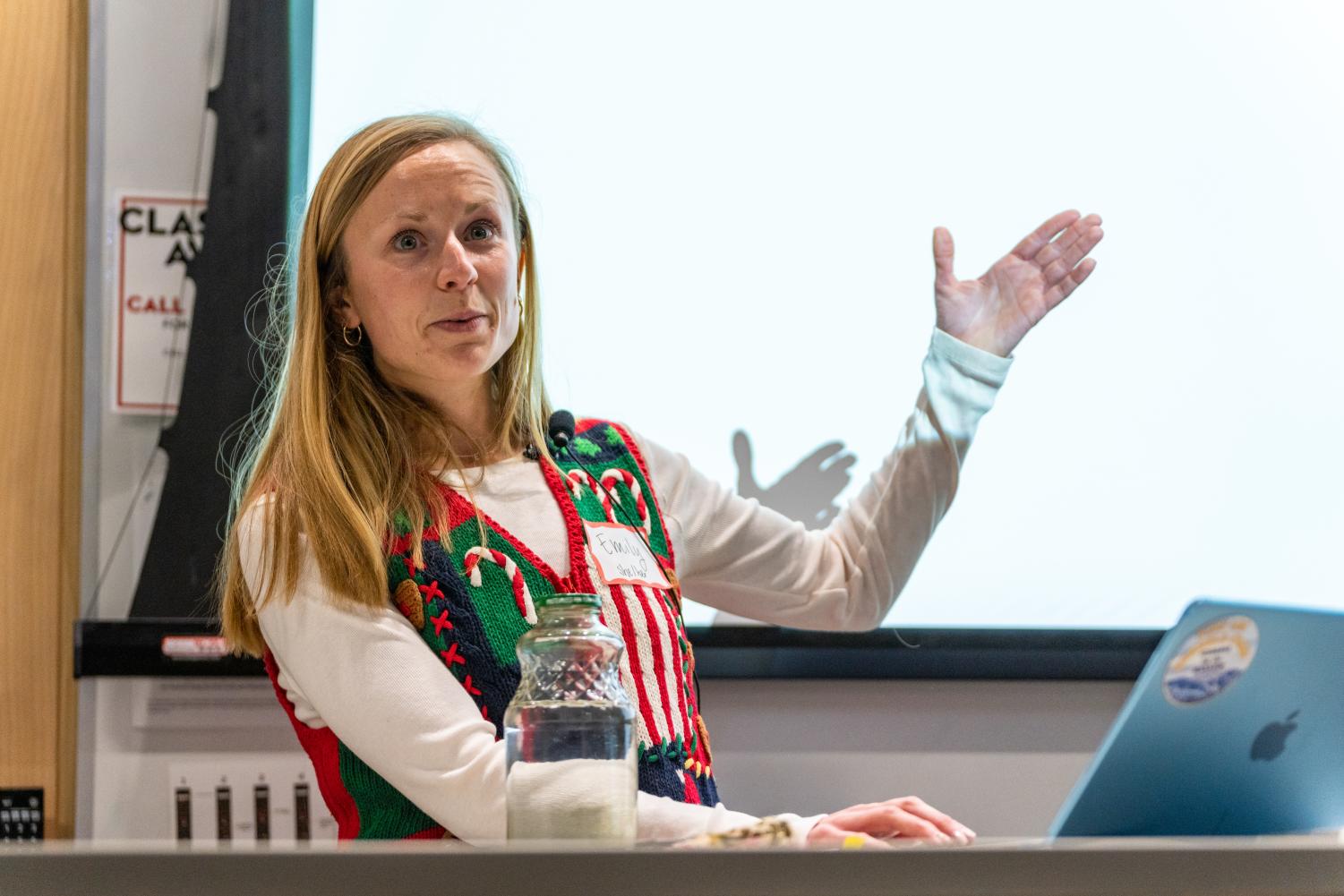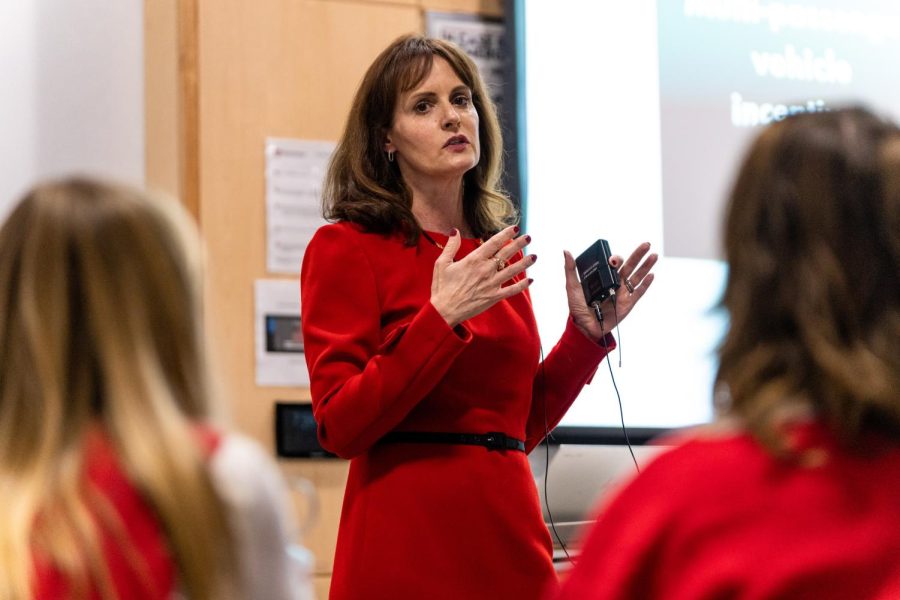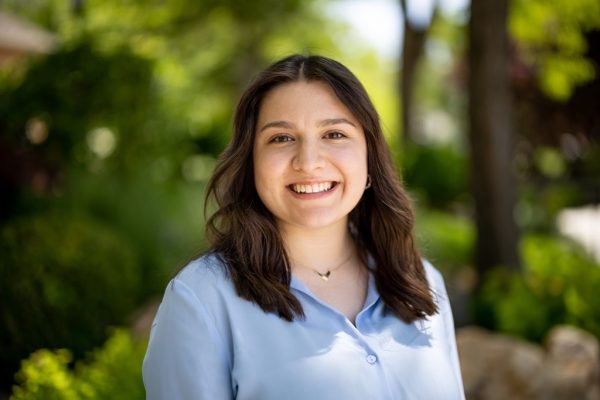Students for the Wasatch Host Event to Present Alternatives to Gondola B
Salt Lake Country Deputy Mayor of Regional Operations Catherine Kanter speaks at the keynote event held by Students for the Wasatch in Gardner Commons at the University of Utah campus in Salt Lake City on Wednesday, Dec.7, 2022. This event is about the common-sense solutions approach to solve the traffic problem in Little Cottonwood Canyon in Utah. (Photo by Xiangyao “Axe” Tang | The Daily Utah Chronicle)
December 11, 2022
Students for the Wasatch, a University of Utah student group, held a public event in conjunction with Salt Lake County Deputy Mayor Catherine Kanter on Wednesday, Dec. 7 to present alternative solutions to the Utah Department of Transportation’s proposed Gondola B in Little Cottonwood Canyon.
Reviewing the Issues
During the event, Co-founder of Students for the Wasatch Emily Pitsch reviewed several concerns with the idea of building a gondola including the fact that Little Cottonwood Canyon contains a watershed that would be impacted by the construction near old mines contaminated with heavy metals. Another concern is how the gondola would ruin the canyon’s beauty
“The gondola is going to be very ugly,” Pitsch said. “We have this beautiful canyon and we should respect its beauty.”
SFW said UDOT’s estimated $550 million project is too expensive when considering other problems Utah faces environmentally.
“It’s really irresponsible considering our state has much more pressing issues such as the Great Salt Lake drying up and [people] breathing in arsenic dust,” Pitsch said.
While the gondola is marketed and aimed at solving traffic congestion in LCC, Pitsch said it won’t exactly fix the traffic problems. UDOT estimates that a gondola ride, including time to park and walk to the station, would be approximately 55 minutes. A car ride is estimated to take 11-15 minutes without traffic and 38 minutes with traffic.
The existing capacity of ski resorts is 10,000 people, however, if UDOT were to build a gondola, skier capacity would increase to 12,000 people.
“Increasing the skier capacity while simultaneously saying you’re trying to decrease traffic does not seem like the most efficient way to accomplish the decrease in traffic,” Pitsch said.
Pitsch concluded by reiterating the gondola is not supported by the majority of the public and that UDOT’s aim to increase resort capacity would benefit private businesses.

Common-Sense Solutions Approach
Deputy Mayor of Salt Lake County Catherine Kanter presented four alternatives to UDOT’s gondola.
The idea of multi-passenger vehicle incentives such as incentivizing carpooling, developing rideshare programs and slugging (a safer way to hitchhike) would be one way to address traffic concerns.
The second alternative is investing in an enhanced electric bus system as a more reliable solution. Earlier this year, SFW demonstrated how electric buses could be used as a more sustainable way to get up the canyon.
Kanter said tolling, ski parking reservations and parking management would also help to alleviate traffic congestion. “We have evidence that what Alta did last year with ski parking reservations actually decreased cars, but … increased riders,” Kanter said.
The last solution Kanter presented was implementing traction device requirements with expanded inspection hours and enforcement. “This is a really big issue, trying to make sure that we are enforcing traction device restriction so that vehicles that are going up the canyon are capable of doing it in a safe way,” Kanter said.
She added Utah has tried to enforce traction device requirements in the past, however, “we haven’t really ever put a lot of muscle into this.” Kanter added by spending more money and layering this idea with parking enforcement, several traffic issues can be addressed.
Kanter believes the flexibility of these approaches makes them more pragmatic and practical
“What I’m suggesting is that we invest in these other techniques, we set performance measures, we track the data, we make informed decisions,” she said. “If in 5 to 10 years, we’re wrong and common sense solutions didn’t actually get the work done. That’s when we could talk about a more invasive cost, a permanent solution like a gondola.”
According to Kanter, the common-sense solutions approach would cost an estimated $325 million, saying she was “cautiously optimistic” that UDOT would consider adopting it.









